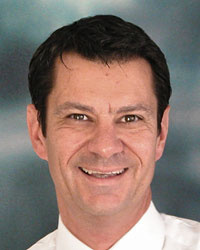Serge Ferrari Group

Project at a glance
Role of periostin in the osteocytic regulation of bone modeling and remodeling
Osteocytes orchestrate bone modeling and remodeling in response to mechanical loading, parathyroid hormone (PTH) and microdamage. These actions are primarily mediated by sclerostin (Sost) and RANKL/osteoprotegerin (OPG), respectively. Moreover osteocytes may be capable of directly resorbing bone, i.e. osteocytic osteolysis, and therefore to express cathepsin K (CatK) and other collagenases.
During the last SNF grant cycle, we discovered that the matricellular protein periostin (Postn) expressed by osteocytes is an essential mediator of the cortical bone response to mechanical loading in both exercise regimen (Bonnet et al., J Biol Chem 2009) and fatigue, as well as to intermittent PTH administration (Bonnet, Conway, Ferrari, PNAS 2012). Indeed, axial compression and PTH increase periostin expression, which in turn inhibits sclerostin, stimulates Wnt-beta-catenin signaling, and regulates osteoblastic gene expression (ibidem). Moreover, we observed an increased expression of RANKL in osteocytes from Postn KO mice, whereas periostin expression was increased in CatK KO mice. We also reported that inhibition of RANKL markedly decreases the anabolic effects of intermittent PTH on bone remodeling surfaces, but not on modeling surfaces (Pierroz et al., J Biol Chem 2010) - where periostin is expressed -. Hence we hypothesize that periostin plays a central role in the osteocytic control of bone modeling and remodeling. We further hypothesize that RANKL is not required for a modeling response to mechanical loading.
Here we propose to pursue our work on the regulatory mechanisms of bone modeling and remodeling using mouse models of osteoporosis and biomechanical stimulation. Specific aims are as follows.
- To investigate the role of periostin on the biomechanical response to cathepsin K inhibition.
- To investigate the role of periostin on bone remodeling and osteocytic osteolysis.
- To investigate the role of RANKL expression and inhibition on the skeletal response to mechanical loading.
- To study the association of serum periostin and Postn polymorphisms with bone microstructure in postmenopausal women.
In turn, the results generated by our proposal will contribute to better understand the role of osteocytes and periostin in the control of bone modeling and remodeling, and thereby the mechanisms of action and effects of newly developed osteoporosis drugs. Furthermore, our results will potentially support the development of a new cortical bone marker (biochemical and/or genetic), periostin.

